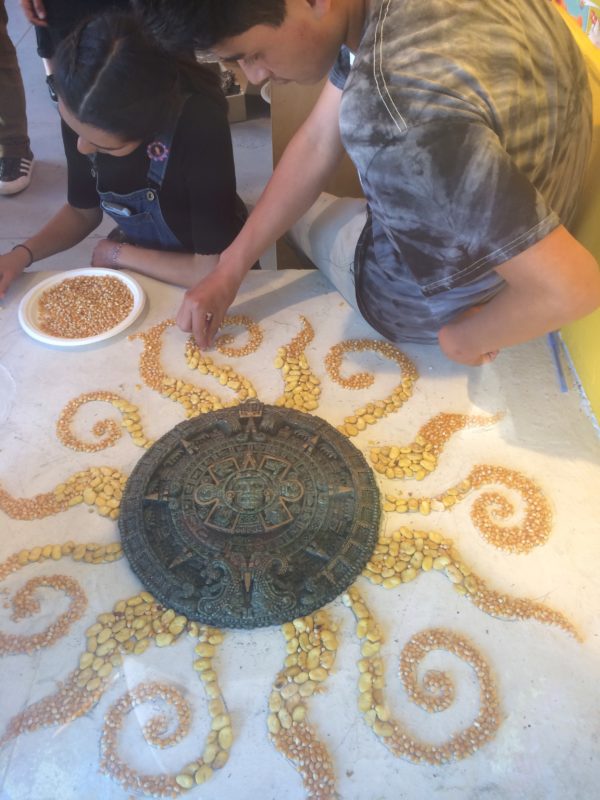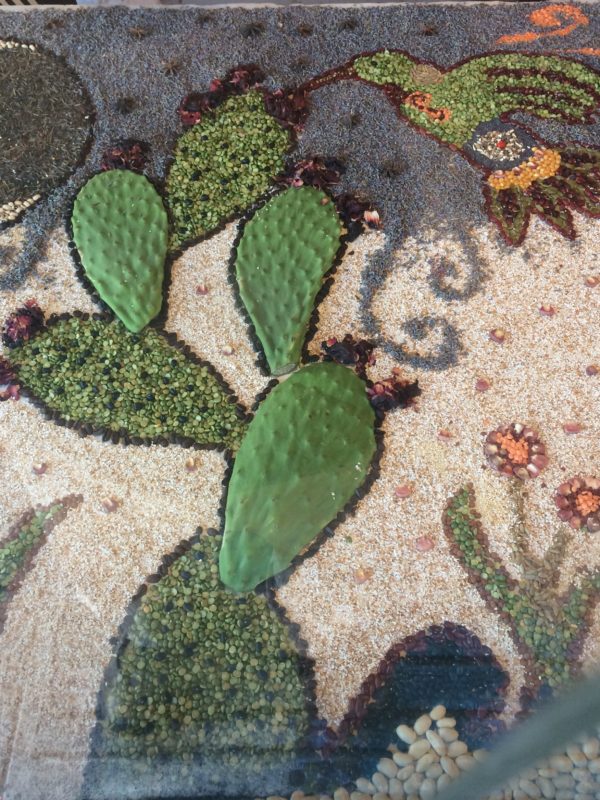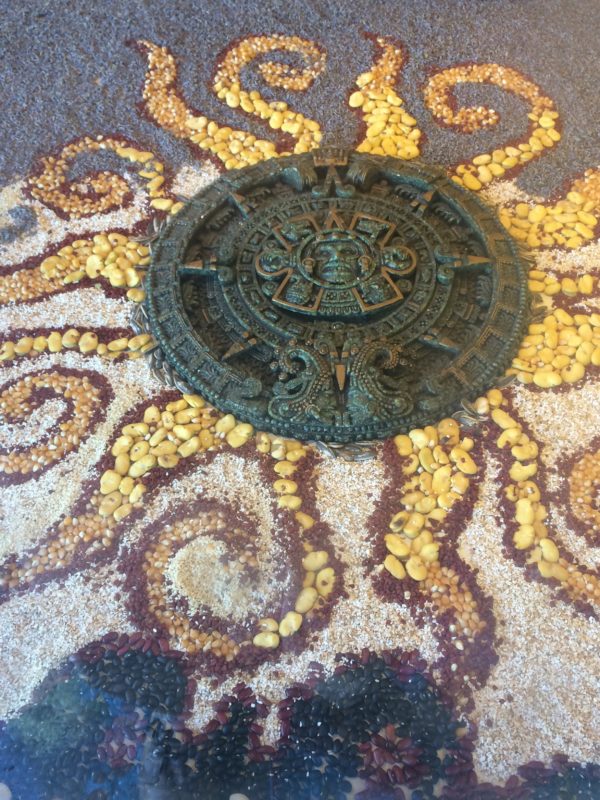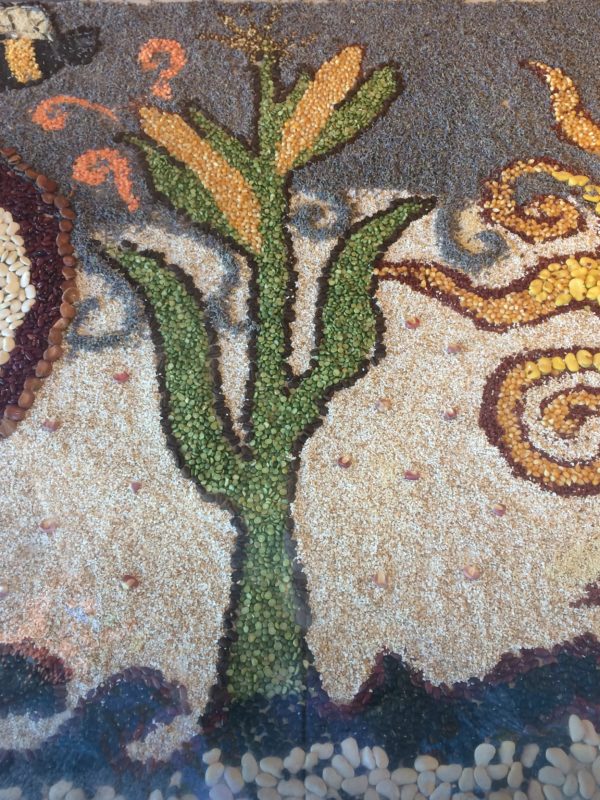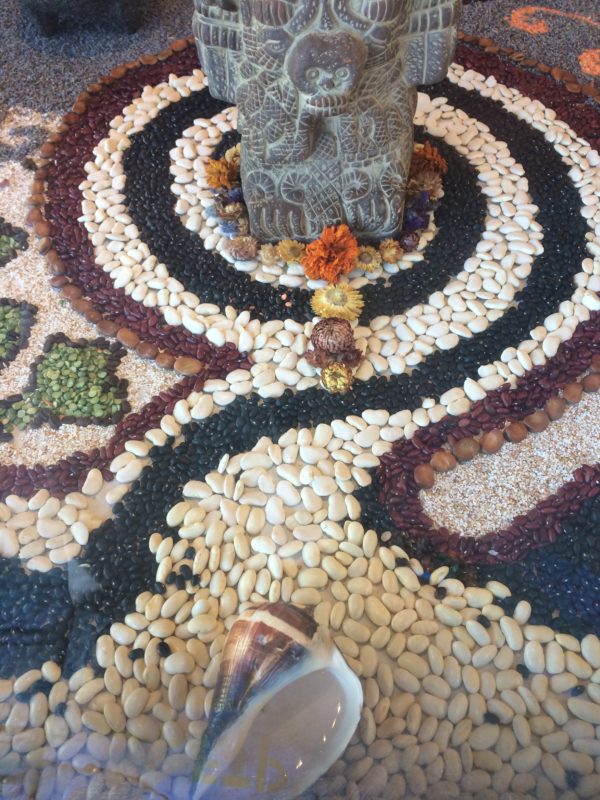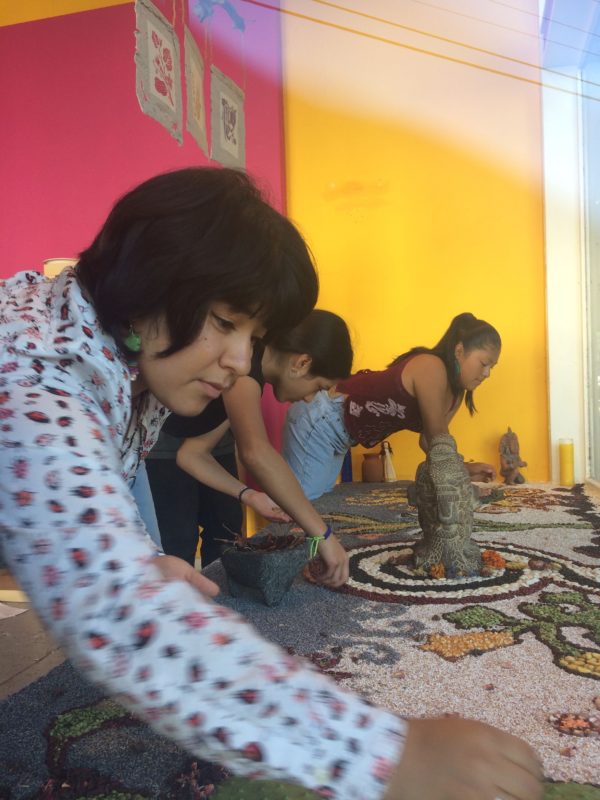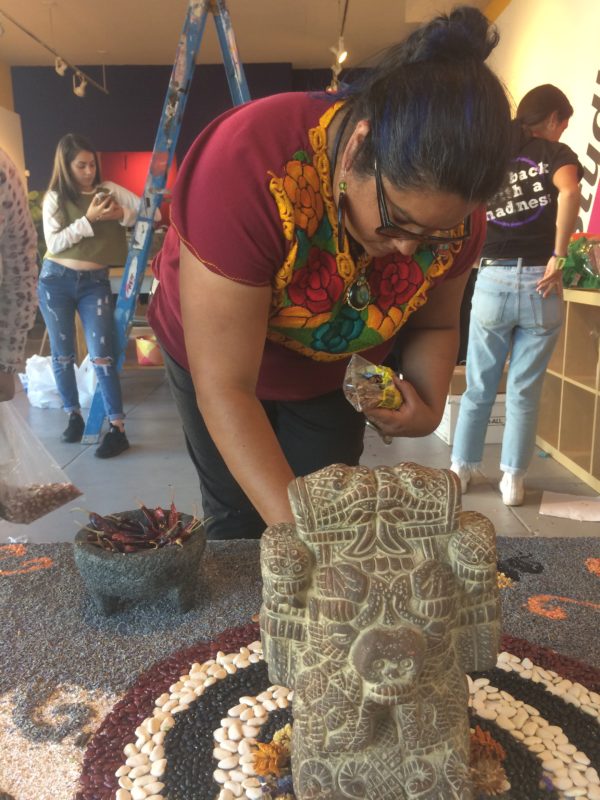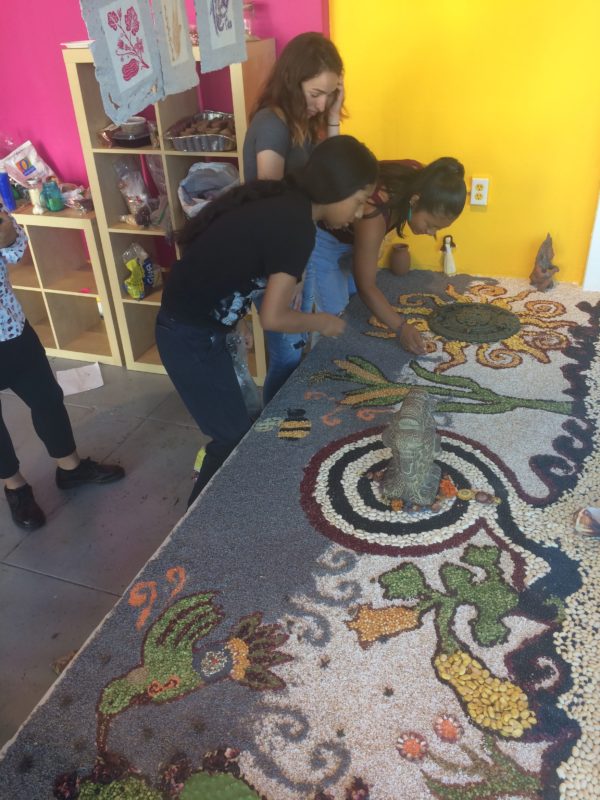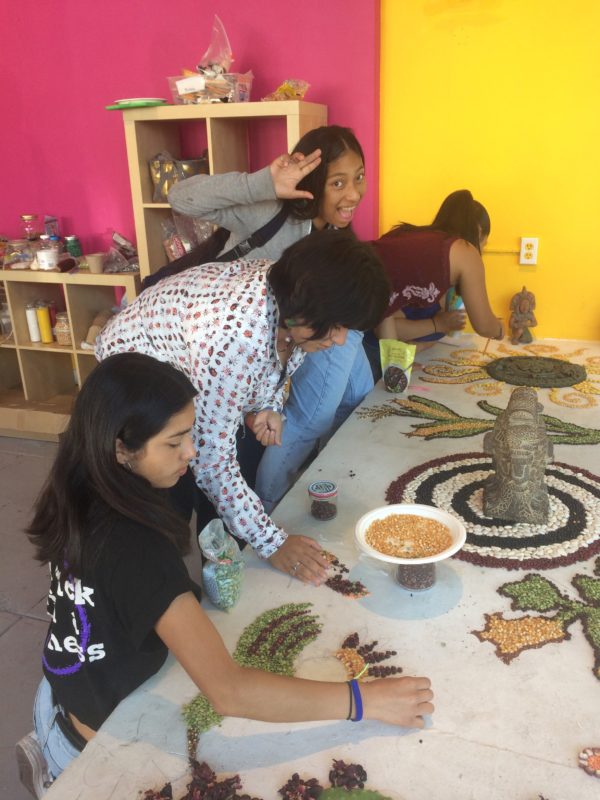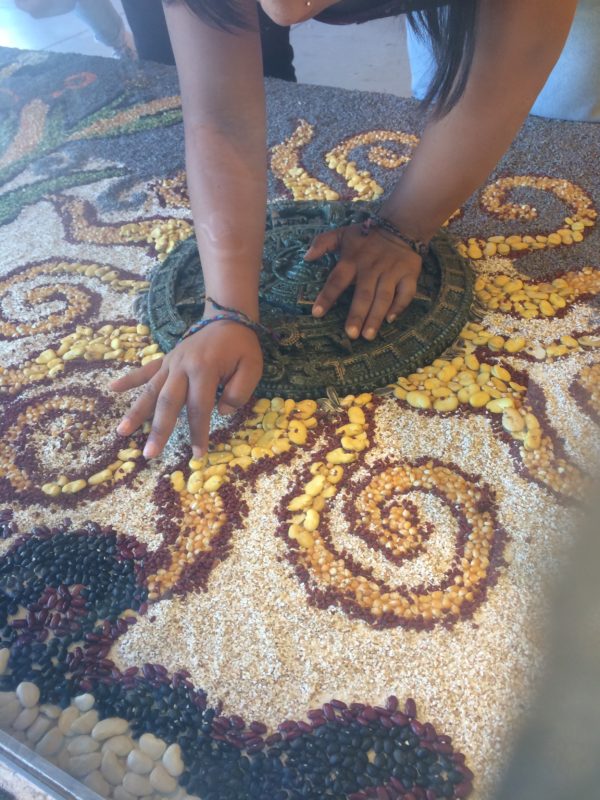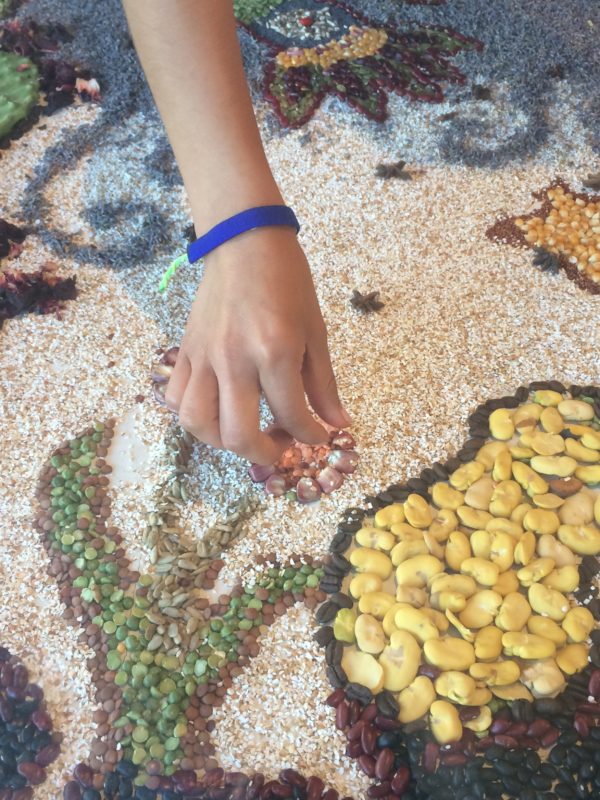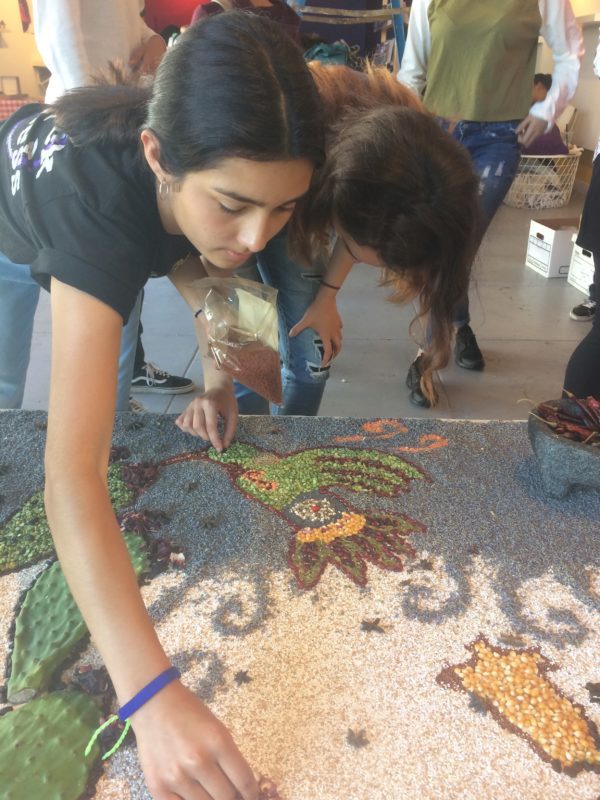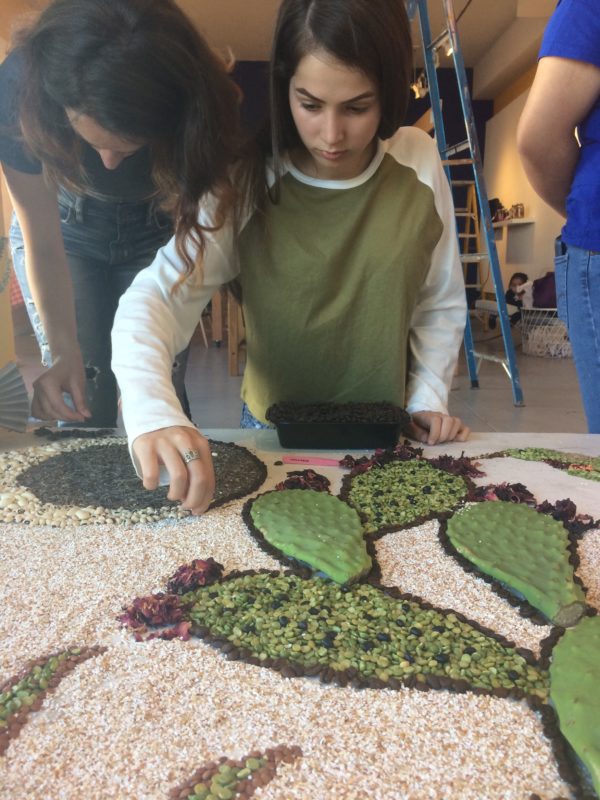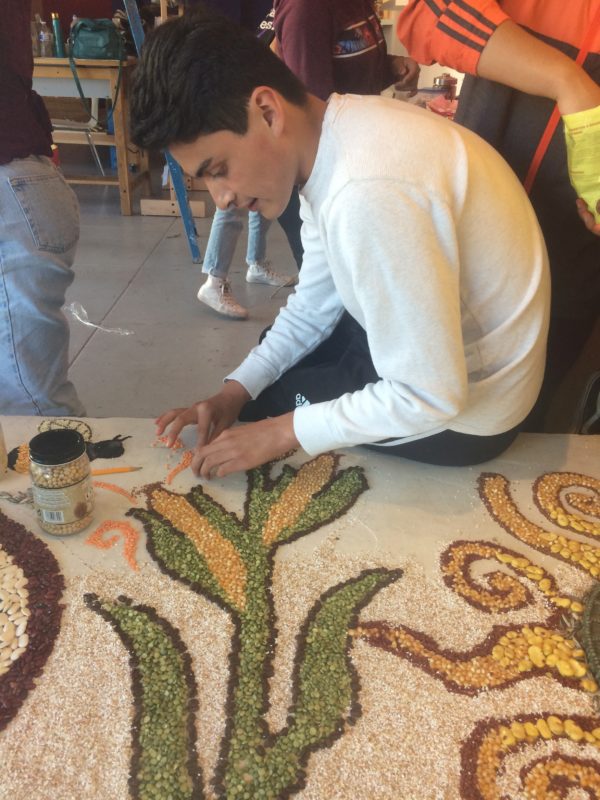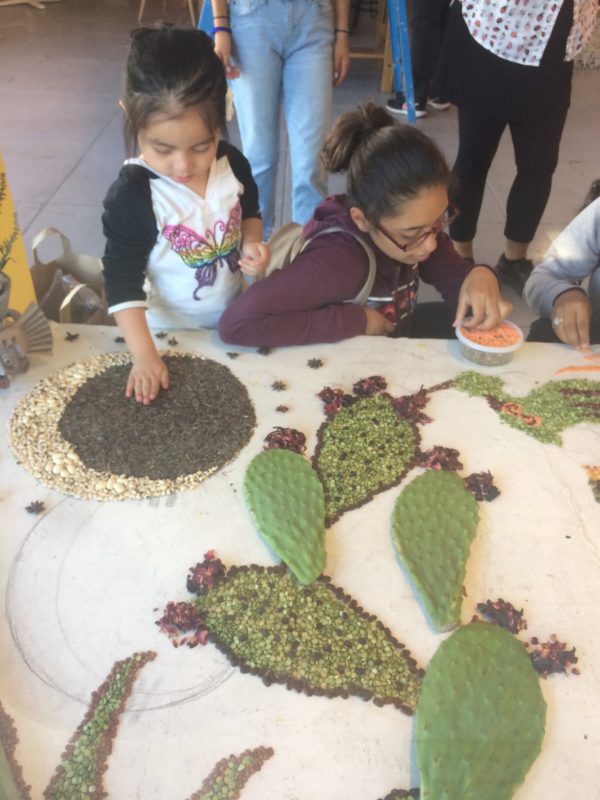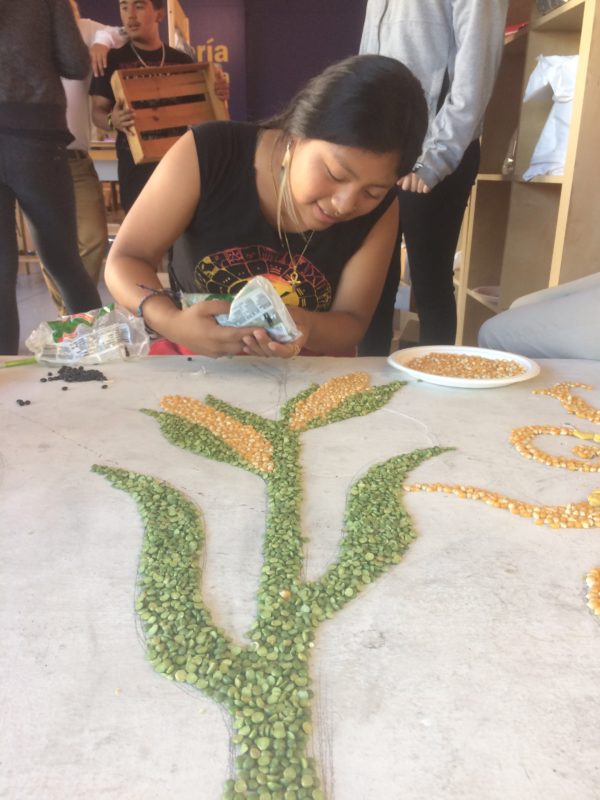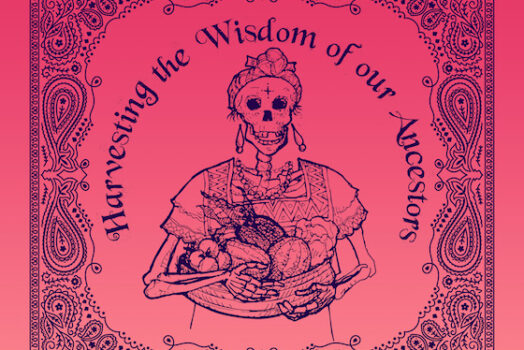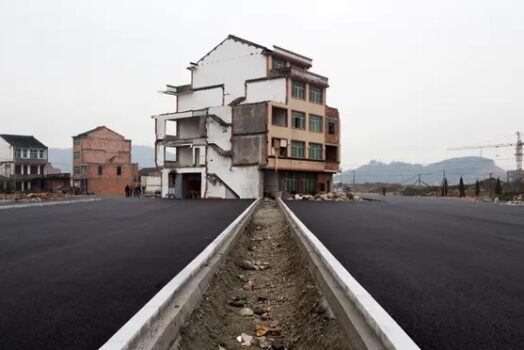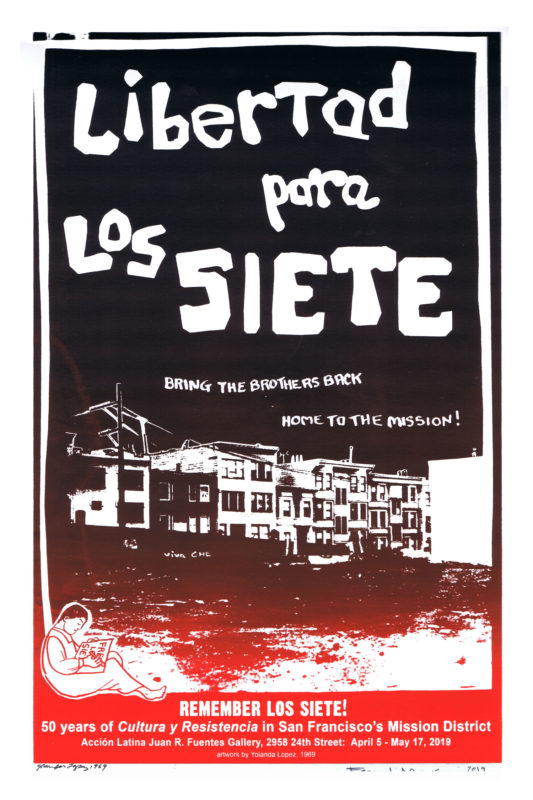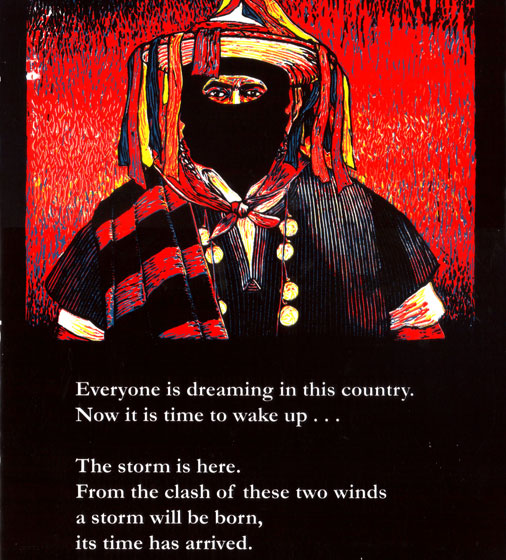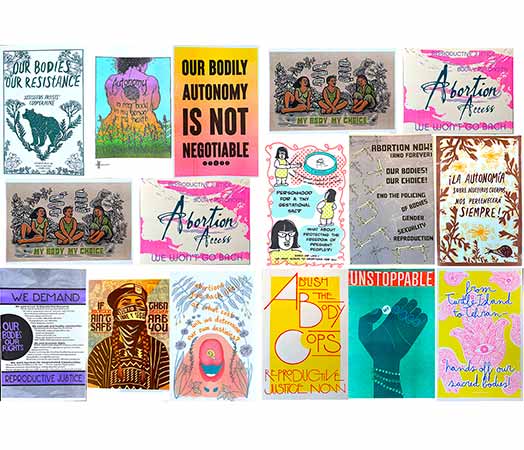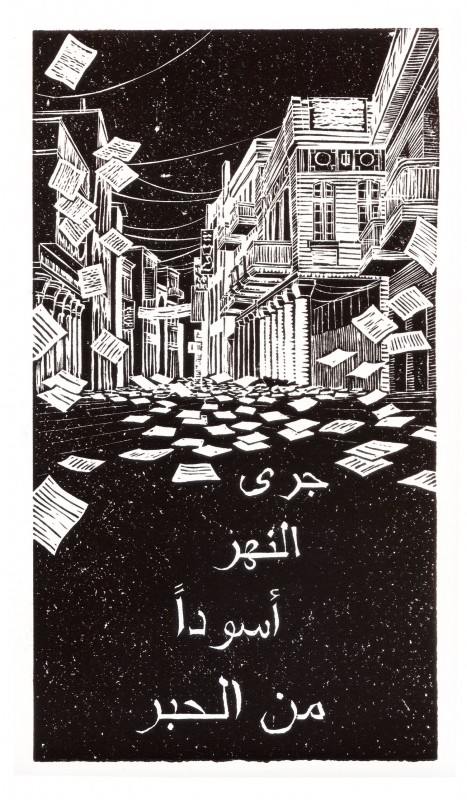Much of my art is created for use by activist organizations, most of it is individually created, things like poster designs, block prints or etchings. I’m happy in this work. But when I get the opportunity to work on a collective project, it’s a different kind of happiness.
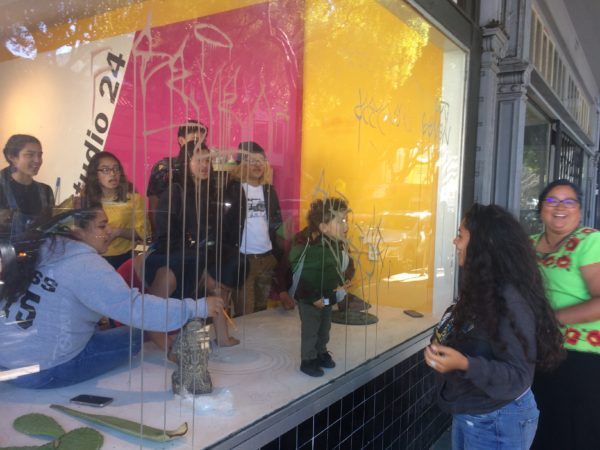
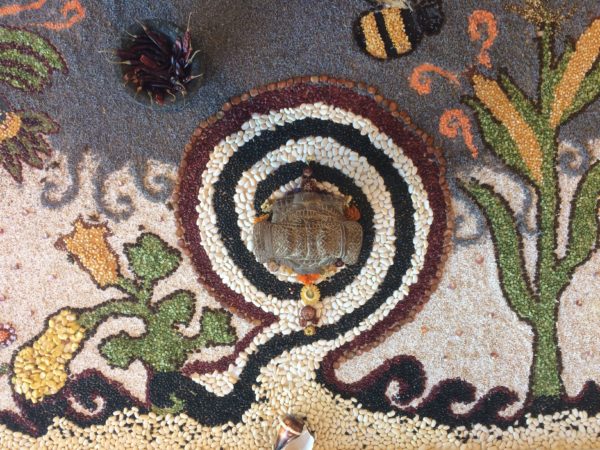
For Galería de la Raza’s Comida es Medicina exhibition, I worked with Tere Almaguer and Jacquie Gutierrez, two organizers with PODER, a San Francisco-based environmental justice organization with whom I’ve worked for a long time. PODER is building up a series of community gardens and farms in the Mission and Excelsior neighborhoods, combining a demand for community land in community hands, with a just transition frame that centers those most impacted by climate change. A big part of that has been the youth-led Urban Campesinx, reclaiming ancestral land-based traditions in the context of contemporary intersectional conversations.
Comida es Medicina was co-curated by Suzy González and Luz Calvo. Here’s an interview with Luz Calvo, co-author of Decolonize Your Diet, from my partner Michelle.
Jacquie, Tere and I came up with a rough idea: a seed altar, honoring the work of youth members of PODER, and some way to combine the altar with our printmaking skills. In the days leading up to the installation, Jacquie and Tere facilitated a conversation with Common Roots, a summer program bringing together Latinx and Asian youth from PODER and Chinese Progressive Association. The youth created seed pots, designing compostable pots covered in seed patterns, that would become part of the installation. At the same time, the summer camp that my son takes part in, at another PODER garden, el Jardin Secreto, made handmade paper with the kids, which they donated to the project.
On the first install day, the dozen or so youth talked about the elements needed for life: earth, water, sunlight. Tere contributed a Coatlicue statue, that became the central element, and an Aztec calendar representing the sun. We brought packages of non-GMO seeds, beans, and grains, as well as the things from our kitchens which had been sitting on shelves for far too long.
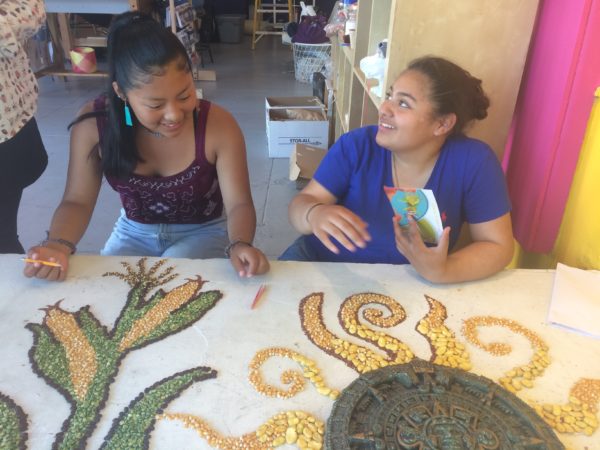
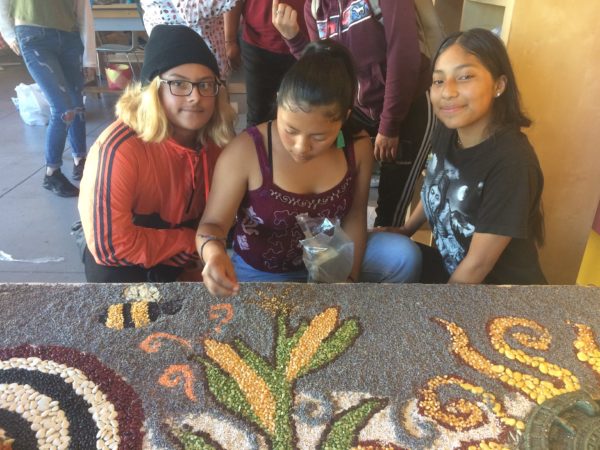
From there, the youth took over: designing the patterns of water, corn and nopales, hummingbirds and bee pollinators, and a sky made of lavender, over the course of two afternoons. We finished the altar by hanging block prints on handmade paper from the ceiling above the altar. The images represent the three sisters, corn, squash and beans, the traditional companion plants of many North American native peoples.
Galería gave us an entire storefront area, twelve feet wide, to work with. That corner on 24th & Bryant is sacred space for the Mission, which Galería de la Raza has been holding for 46 years. Now, with rising rents and the precarity of a month-to-month lease, it’s unclear how long that space will exist as a community gathering place and site of cultural creation. So it was an honor that our youth were given the opportunity to make it their own.
The windows had been tagged with acid, which at first seemed annoying. We couldn’t do anything about that. But as time went on, the tags disappeared for the color of the seeds behind them. As in other public projects, part of the fun is how many people stop and watch or start conversations about the seeds and the images as they walk by and enter the gallery. In much of my art, I design and redesign, sometimes obsessively, trying to get the details right, or thoroughly researching the subject, or trying to make sure that there are multiple associations within the images that make sense. This kind of project is the exact opposite, simply making, letting the materials at hand, and the collective vibe, carry you.
It was an honor to make art with this amazing group, who did tremendous work:
- Inkza Angeles
- Shakty Angeles
- Daniela Herrera
- Ximena Herrera
- Jessica Huang
- Edward Molina
- Alijah Orallo-Mestayer
- Geovanni Quintanar
- Julian Rodriguez
- Mariana Rodriguez
- Sarai Sanchez
- Sofia Sanchez
- Melody Sandoval
